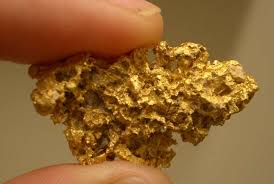Care for Karats? October 30 2015
The economic value of gold has been leveraged by society for centuries. It’s been used as a hedge against inflation, it once pegged the US dollar in the ‘Gold Standard’ and it’s still being used by entire economies as a security against turmoil. However, its aesthetic value has transcended countless generations. Its representation of wealth and prosperity has eternalized its natural glamor since our early ancestors discovered the ability to melt and mold it into a variety of shapes and sizes. The jewelry industry grew largely from incorporating this incredible precious metal into their designs and therefore it is no surprise that it is an essential component of their collections. Understanding the different types of gold available can, therefore, play an important role in choosing the right gold jewelry for your own collection.
One of the biggest differentiating factors involve the purity of the gold, as measured by the unit, Karats. Its scale runs from 24K (100% pure gold) to 0K (0% pure gold). In today’s market, even 24K gold is often only 99.95% pure gold despite its nomenclature as it is practically infeasible to manufacture such high purity outside a laboratory.
today’s market, even 24K gold is often only 99.95% pure gold despite its nomenclature as it is practically infeasible to manufacture such high purity outside a laboratory.
For example, gold bullion, exists as 24K but is practically only about 99.95% pure gold. In addition, to gold bullion, certain jewelers design 24K gold jewelry. However, these designs (often elaborate and detailed) are intended for very special occasions as the metal itself is very delicate at that stage of purity. Regular use is very likely to distort its original appearance and hence tarnish its complete beauty.
22K (91.6%) gold jewelry on the other hand have slightly more strength but are mostly used for plain designs such as necklaces and arm bands. The lustrous yellow is very appealing factor to many of the clients who purchase jewelry of this high purity. However, 22K gold is still too delicate to handle designs that incorporate precious gemstones and diamonds. In this case, the most practical and widely used measure is 18K gold (75% pure gold). Naturally, as the content of gold declines, its bright yellow luster also begins to slowly fade. This effect is largely compensated by blending in other metals such as copper (to obtain yellow/rose gold) or palladium (to obtain white gold). In the final steps of design, almost all gold jewelry are coated with a thin film of rhodium to protect the precious metal from the elements. This coating will also prevent any minor scratches and will maintain its beautiful shine for years to come.
Purchasing gold jewelry is always an exciting time and navigating the avenues of its purity in a well-informed manner will aid in your search for that perfect addition to your collection. Its value, both economically and aesthetically, is well known to us since ancient times but it sometimes can be confusing when one does not know the differences that exist in the types of gold available. Hopefully, this article gave you a better understanding of these variances and made you appreciate as to why they exist.
